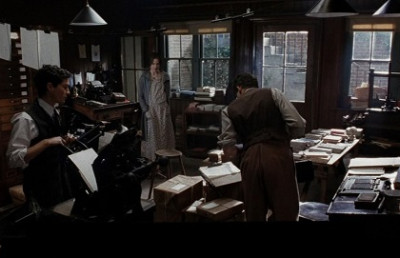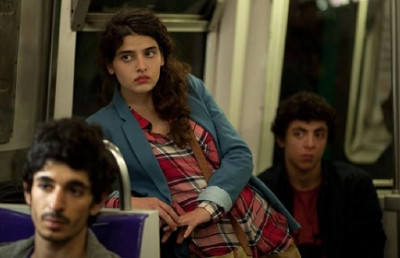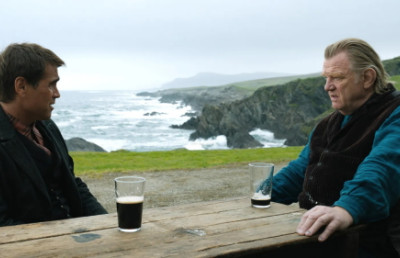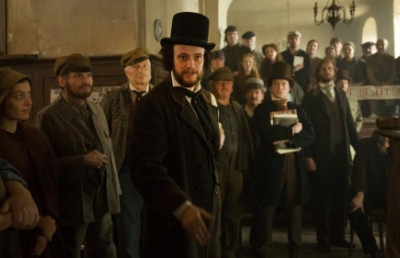Berlinale 2022: The Great Restart
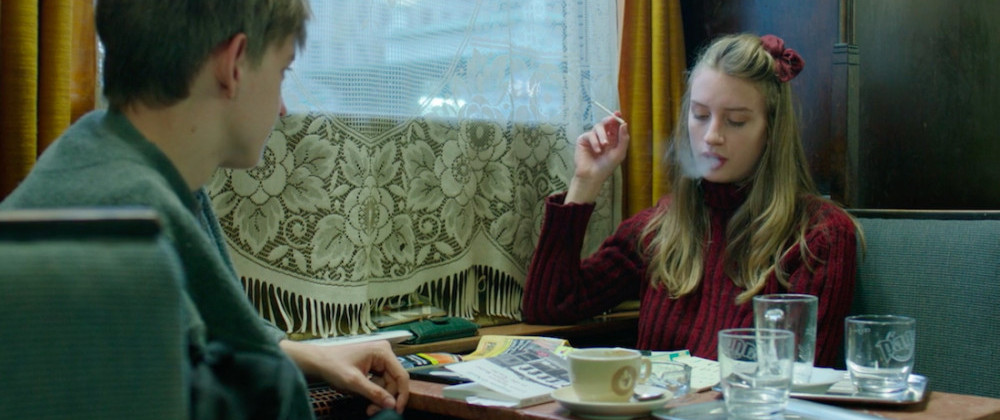
The year 2022 was supposed to mark the exit from the pandemic, the event has severely disrupted and stigmatized the film festival circuit among many other things. Germany´s biggest film gathering and the opener of European film festival season –Berlinale International Film Festival– stood undisturbed at the beginning of the first wave in 2020 wrapping its jubilee 70th edition. Moreover, the anniversary edition marked the inauguration of a new festival management led by Carlo Chatrian and Mariette Rissenbeek. The following edition saw the festival shift to online as many other big festivals did, holding an industry-only event in February and a Summer Special for public in June.
A few weeks before the 72nd Berlin International Film Festival opened, Berlinale leaders announced the festival would be held on-site, despite the third coronavirus wave surging. The similar attitude has been adopted by two preceding big festivals, Sundance and Rotterdam, however both festivals have been forced to scrap the physical event and replace it with an emergency virtual substitution.
Venice Film Festival has proven that a major film event can be organized despite the ever-dispersing shadow of COVID-19 although helped by its summer Mediterranean climate. Berlinale boldly did the same under mildly chilly weather of passing Winter and on the precipice of a new wave.
Welcoming double vaxxed and boosted visitors, the Berlinale crew created a COVID-free zone around the Berlinale Palast. Accredited visitors were required to undergo AG tests on a daily basis. The festival and the city offered testing even at 1:30 AM. Reinforcing the social distance measures, the festival called off all parties, red carpet gathering and ensured one-way flow in and out of the many dark rooms. The preventions seemed to function as the festival announced only 2% infection rate among the visitors.
Although the 71st edition had to take place under provisory conditions of virtual screenings, the decision did not discourage filmmakers and producers. The line-up has been stellar, if a bit quantitatively pared down, yet it introduced the year´s best films including What Do We See What We Look at the Sky, Petite Maman, Bad Luck Banging or Loony Porn or The Wheel of Fortune and Fantasy. In the aftermath of the preliminary period of suspended in-person festival, the new programming crew faced high expectations. More so, as the 2022 Berlinale had been hailed as the Great Restart for the entire film industry.
Chatrin, who succeeded Dieter Kosslick as the Berlinale´s artistic director, transformed Locarno Film Festival into a new arthouse cinema hub welcoming uncompromising and innovative talents across different generations. Chatrian along with his programming team headed by Mark Peranson integrated partially the Locarno flavor into Berlinale´s new chapter.
After his appointment, Chatrain created a new section, Encounters, which can be described without irony as Berlin’s Little Locarno. Locarno’s programming resonated this year beyond the Encounters section. Even so, the two festivals are not going to cannibalize each other. With a new programming director at the helm, Locarno charts a different path, abandoning the unrestrained fascination with cinephilia and placing a greater emphasis on genre filmmaking and audience appeal.
The Classicistic Take Off
Encounters is designed to challenge predefined, standardized, and norm-based notions of cinema. Alexei Zolotukhin’s sophomore film Brother in Every Inch, premiering in Encounters, explores the obstacles that identical twins face while trying to become pilots at a military school. In addition to paralyzing co-dependency, Andrey and Mitya have a different set of issues to overcome. While Andrei is not that interested in theory, his erratic landings are making his teacher livid. Despite being fast and smart in class, Myta’s anxiety makes him vomit and faint mid-flight.
Brother in Every Inch is a rather classicist cinema both in terms of the story and the execution. The boys get more preoccupied with one another than their studies. And Zolotukhin squeezes the maximum of the emotional drama and trauma on two distinct occasions. A thriller-like situation always involves one of the twins being imperiled, while the other loses sight of him.

Brother in Every Inch
The boys, along with their mentor –a father figure– who attempts to prepare them for the rigors of real fight and real life oscillate between the firm earth and flimsy air. The boys don’t feel comfortable in either element. Flight scenes are handled in an old-fashioned way, with a camera mounted either in the cockpit or on the plane without any drone shots. In part, Zolotukhin’s lack of experimental and progressive filmmaking can be attributed to the fact that he is a protégé of national auteur Alexander Sokurov.
Brother in Every Inch renders the proverbial adage of blood being thicker than water to a more clinical statement. Nevertheless, the selection of the film into the section celebrating new perspectives on cinema remains puzzling.
Preapocalyptic Hybrid
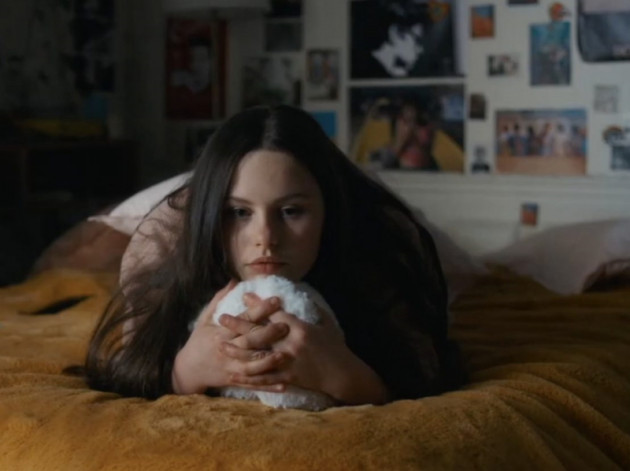
Coma
On the opposite pole with subversive and radical works stood Bertrand Bonello´s follow-up to Zombi Child, Coma, which concludes the trilogy started with Nocturama. Nocturama, Zombi Child and Coma form a Gen Z triptych mapping the tribulations of the young generation. The story revolves around the characters in Bonello’s daughter’s age bracket growing up in the end of time, offering a generational diagnosis.
Coma is the most deranged instalment in the film trilogy. The film documents the madness of the COVID-times and the toll it took on the people coming of age in its midst. On the other hand, it is a rather distressing incantation for a better tomorrow. The excess of clips depicting nature in dire agony filtered through the eyes of somebody who is going through a mental breakdown makes a rather schizoid statement.
By assimilating videoart and documentary elements via group FaceTime calls and video journaling, the film wriggles violently out of the cocoon of conventional narrative norms. The mixed-media nature of Coma pushes the oeuvre among metamodern cinema defined by decentralized narration and style.
Observational fragments replace a linear structure as the director scrutinizes the ennui the protagonist endures, a nameless Girl, Zombi Child star Louise Labeque. Imprisoned in her room as an obvious sign of the lockdown zeitgeist, she has for company a morbid YouTube influencer and a group chats fantasizing about serial killers while suffering from creepy nightmares and witnessing a strange soap opera enacted by her dolls.
Bonello unravels the experience of isolation as a fever dream pushing the protagonist to a breaking point. Employing several strategies to project a fabrication of a disturbed mind, the French auteur at several points reaches into David Lynch´s toolbox. That includes the odd soap opera embedded into the film in the like of Lynch´s Rabbits or agitatedly wandering in a faraway forest shot in digital grainy imagery recalling a limbo between life and death, sanity and insanity.
Psychogeography of Holocaust
The Greek entry in the Encounters section is less formalistically subversive than Coma but no less disturbing. The directorial tandem of Christos Passalis and Syllas Tzoumerkas (Tzoumerkas´s drama The Miracle of the Sargasso Sea bowed in Berlin in 2019) unearth and recreated the forgotten chapters from the history of Thessaloniki in The City and the City.
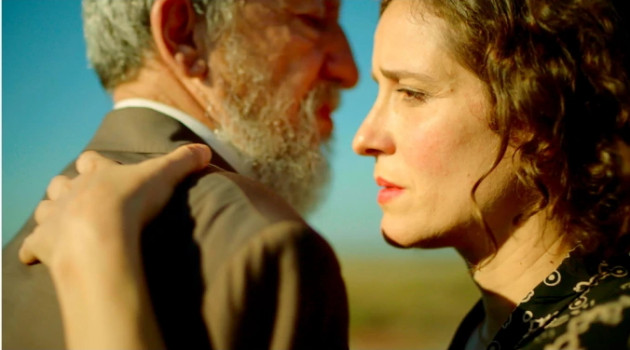
The City and the City
The City and the City is a cinematic docu-fiction as the directors, who co-wrote the script, focus on episodes of the extermination and humiliation of Jewish citizens during WWII. In that time, 97% of the local Jewish population had been killed. Across six chapters, the film exhumes local and national history and fills in the gaps in collective memory and Holocaust history. Passalis and Tzoumerkas are re-enacting the events on the authentic locations in natural sets. More importantly, the directors replay the events on the places where they actually happened focusing on the act of reconstruction of the deeds.
In essence, The City and the City is built on a concept of a site-specific documentary theatre that uses cinematic means to enhance the drama. A procession of the acting ensemble across the current day Thessaloniki glues the standalone chapters of the city´s hidden history. It is an effective and powerful way to revive the history and fuse it with the present times in order to make the present time parallels painfully recognizable.
With different styles and forms applied to the subject of Holocaust across fiction and documentary filmmaking, there has not yet been one which would utilize psychogeography as does The City and the City. The director employed a Brechtian technique in creating a distancing effect to reroute the focus on the essence of the scenes.
The crucial distinction compared to less experimental Holocaust works is that The City and the City does not attempt to deliver the episodes in minutiae period details. Instead, they let the past resurface on places of the present. Hence, the ultimate effort is less of a historical excavation and more about documenting deeply rooted traits that have survived and been passed down for generations in a cycle without an end.
Porn Confessions as Social Experiment
A different flavor brought Ruth Beckermann´s MUTZENBACHER into the Encounters programming in terms of inventive and socially relevant docu-making. Viennese documentarist and video artist Beckermann decided to explore the legacy and resonance of the infamous 1906 novel The Story of a Viennese Girl also known as Josefine Mutzenbacher; or, The Story of a Viennese Whore, as Told by Herself.
The book follows the titular character through a series of sexcapades in turn-of-the-century Vienna for which the book has been decried as a work of child pornography. While it had been published anonymously, the book´s author has been identified as Felix Salten who is behind the beloved children’s book, Bambi (he was allegedly a passionate hunter).
Beckermann concocted a simple yet effective set-up for the documentary by posting a faux casting call for an upcoming film based on the novel. The call has been designed to lure men across different generations. The director then lets them read the juiciest passages on camera as a part of the casting process.
A discussion with candidates follows transposing the exploits of the literary character and their reflection into the current sociological context. The confrontation of aspiring actors with the transgressive text prompts intriguing reactions, some of them surprisingly candid and personal while showcasing a generational shift on all things carnal – consent and desire including.
Despite the rather simplistic concept, Beckermann is toying and subverting documentary norms while not lacking a sense of humor. The majority of the lewd Mutzenbacher episodes is read aloud on “a casting couch” with the director zooming in on the awkwardness of the social actors framed by the talking head trope.
Beckermann occasionally alters the set-up and lets her protagonists verbally role-play (sauciest) moments from the book, a tactic that elicits as much of a therapeutic coming out as well as a comedic relief. While the casting is a ruse for the social experiment veiled as making-of a film, MUTZENBACHER becomes ultimately taboo-breaking in mapping up the current perception of all things sexually transgressive filtered through masculine optics, and in way showcasing the mercurial state of male collective psyché and its shifting patterns.
A Viennese Para-Docufiction
The fifth feature film A Little Love Package by Gastón Solnicki is less subversive in terms of narrative tropes compared to Bonello’s subversive and subverting Coma but still playfully experimental in terms of stretching the cinematic norms. Solnicki’s latest piece is a perfect example of the edgier arthouse fare that the section Encounters aims to promote.Billed as “a classical comedy”, the film follows primarily two protagonists Angeliki (Angeliki Papoulia) and Carmen (Carmen Chaplin). Angeliki plans to buy a flat in Vienna while the interior designer Carmen helps with the real estate hunt. The place and time remain relevant as the film is set into 2019 when Austria decided to ban smoking in public spaces including cafés.
This decision in the director´s eyes marks an end of era. The two facts, Angeliki´s pursuit of new home in Vienna and smoking ban in the Austria´s capital, don´t have a direct connection and A Little Love Package is certainly not “a classical comedy” in the conventional sense.
The film is more of a para-documentary completely improvised by the leading actresses and as meandering and digressive as its description suggests. Like Solnicki’s previous work Kékszakállú, a poetical yet conceptually designed assemblage of vignettes charting a transition of young Argentine women into adulthood, A Little Love Package is less atomized but still rather plotless, propelled by meanings the economic imagery defies.
For that, the director teamed up with Portuguese cinematographic master Rui Poças. The DP shoots more of an anthropological observation than a narrative film with though-out compositions, while the leading actresses concoct lines firmly anchored in (their) reality suggesting more of a poetically-leaning performative documentary. Ultimately, A Little Love Package is a captivating audiovisual essay about standing on the crossroads and the subject of passing.
Clockwork Anarchy
Encounters showcased another unquestionable talent on the rise, a Swiss filmmaker Cyril Schäublin. Schäublin debuted in Locarno with Those Who Are Fine, a drama following a call center worker as she starts scamming elderly women across Zurich. His sophomore feature Unrest is set in 1870s Switzerland´s Saint-Imier valley known equally for its watchmaking as the anarchist movement.
Schäublin combines these two topics into a single work, which is both a period drama about technological and social change and philosophical musings with a touch of absurdity distilled into a low-key irony. The budding director opens the film with an introductory scene invoking Romanian auteur Cristi Puiu´s conversationalist philosophical chamber drama Malmkrog that sees a group of women discussing a mysterious Russian by the name of Pyotr Kropotkin.
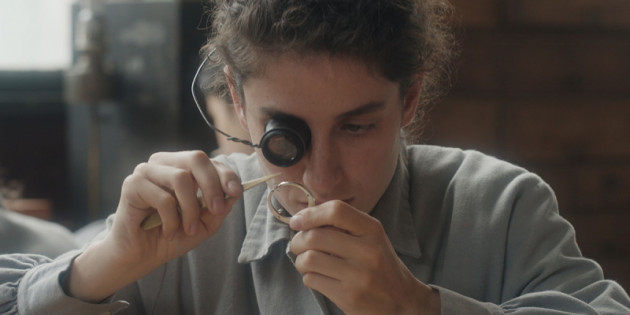
Unrest
Kropotkin turns out to be in the center of the narrative set in the watch factory of St. Imier where anarchism is taking strong roots. The film´s decentralized narrative structure is built around Kropotkin’s visit to the town for the purposes of developing an anarchist map of the region. A group of characters – watch factory workers, street vendors, and police– interact in a series of detached scenes creating a highly original period drama filtered through contemporary lens. The rising capitalism meets burgeoning anarchism in a town running on four different times.
Schäublin takes the road of intellectual cinema but unlike Puiu´s latest effort, he does not overload the film with cascading dialogues that morph into monolithic monologues. On the contrary, the order of scenes is meticulously thought out and rendered in a style associated with the austere filmmaking of Greek New Wave, offbeat performances that are closer to theatrical acting than cinematic.
However, Schäublin developed his personal unique style already in his debut which he reapplies in Unrest. Those Who Are Fine addresses the state of late capitalism and its inevitable social impact in a visual approach of surveillance aesthetics. The utilization of the similar visual method has even more detaching effect in a 19th century film yet allows the filmmaker to put his original visual trademark.
The zooming in long takes in exterior and interior shots may feel counterintuitive, but the approach triggers a mild alienation and resembles more a theatrical staging with languish in each scene. With Unrest, Schäublin confirms his status as a one of the most exciting rising talents in the European cinema right now.
Girl Power
The main competition of the 72nd Berlinale merged mainstream arthouse with formalistically more adventurous works. The director of Wild, Nicolette Krebitz, premiered yet another film about a woman revolting against societal convention, A E I O U – A Quick Alphabet of Love, in the main competition. After her woman-wolf romance Wild, Krebitz chalks another case of socially scorned attraction.
A mature actress Anna ends up as a vocal coach to a young orphaned delinquent and who attempted to rob her. An unlikely romance starts to burn between the sassy actress and the infantile teenager who regards and subsequently fetishizes her as a missing mother figure. Krebitz´s oddball rom-com about the unlikely affair of two outcasts has however a feminist bent.
In her prime, Anna stood up to misogyny, toxic masculinity and male gaze which may or may not have derailed her career. But her tryst is a similar gesture and statement laden with revolt against ageism and celebration of female sexuality. A E I O U – A Quick Alphabet of Love is propelled by Sophie Rois performance of no-nonsense Anna.
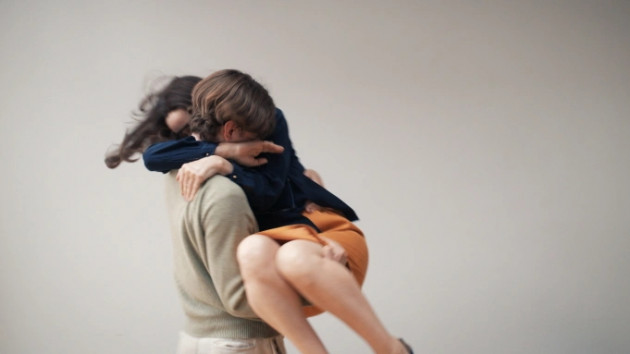
A E I O U – A Quick Alphabet of Love
Apart from the feel-good abortion film Call Jane by Phyllis Nagy, the ultimate crowd-pleaser rose from among domestic filmmakers. The German director Andreas Dresen, whose biopic Gundermann won 6 Lola awards in 2019 including the best film, has returned to Berlin with his politically-tinged pseudo biopic Rabiye Kurnaz vs. George W. Bush. The film dramatizes the tribulations of Rabiye Kurnaz, a sports-car-loving motormouth Turkish housewife, fighting to get her son Murat out of Guantanamo prison.
Meltem Kaptan portrays the down-to-earth, unfiltered and optimism-brimming Rabiye Kurnaz against Alexander Speer who starred as the lead in the award-winning Gundermann. Speer takes on the uptight human rights lawyer Bernhard Docke. The combination of Kaptan´s fish-out-of-water hijinks and Docke´s straight face creates an odd couple vibe. Their interactions create the majority of comic scenes as Kurnaz goes from a peaceful domestic life in Bremen up to Supreme Court in Washington suing the former U.S. president.
Rabiye Kurnaz vs. George W. Bush is one example in a series of miscarriages of justice in the post 9/11 world echoing the period state of politics transcending outside the U.S. territory. Dressen turns the court and political drama somewhat counterintuitively into am upbeat family story about the perseverance and motherly love that beats the odds. The light tone pushes the film´s style into the vestigial territory of farce.
Laila Stieler’s script suppresses the darker elements for a sun-lit laugh-out loud fare that happens to depict somebody´s darkest period in life. The overall narrative is mostly shoehorned into the ever-green template of an ordinary person beating a system but it is almost impossible to not take the film with (a) grain(s) of salt even though it is demonstrably based on true events.
The Indian biopic Gangubai Kathiawadi directed by Sanjay Leela Bhansali stood up the most among the coterie of a mainstream-leaning fare led by empowered female protagonist. Bhansali who co-wrote the script with Utkarshini Vashishtha hits all the notes of a b(h)ollywoodsy story of a simple girl sold into prostitution and her career throughout the Mumbai underground into a globally respected community leader and a sort of Mother Theresa of local sex workers. The film is an adaptation of the true story of Ganga Jagjivandas Kathiawadi documented in the book Mafia Queens of Mumbai.
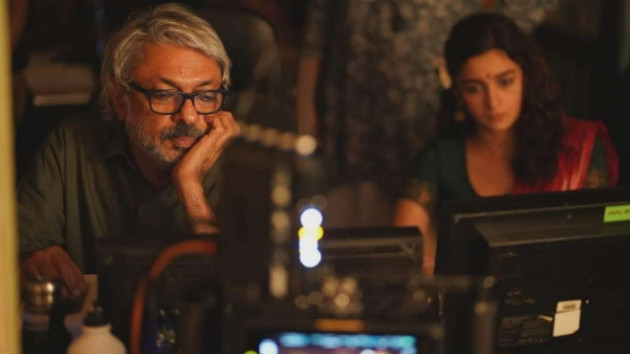
Gangubai Kathiawadi
Gangubai Kathiawadi is an operatic spectacle of big emotions, mythologization and pathos. Bhansali applies creative license to uplift the story of exploitation and misogyny into a tale of sacrifice and hope. Sardonic quips, lush art direction, and musical numbers are elements from the Hollywood formula that Bollywood managed to refine. Gangubai Kathiawadi is not the sole showcase of Indian cinema beating Hollywood at its own game. Curiously enough, the film´s potential viewership is further widen by its squeaky clean PG orientation as Gangubai Kathiawadi must be the most chaste mafia story set within a brothel. Aestheticized violence perpetrated by toxic masculinity prevents the G rating.
Genocidal Found Footage Fable
In the main competition films, even Rabiye Kurnaz vs. George W. Bush served as a desired refreshment after Rithy Panh´s frontal visual raid. In misleadingly titled documentary Everything Will Be Ok, the Cambodian director condensed all the traumas of the 20th century.
It is essentially a sequel to Irradiation, the filmmaker’s previous film shown in Berlin last year. Irradiation also unfolds as the mankind´s video album of the worst atrocities captured by lens and attesting to the humans´ genocidal leaning. Everything Will Be OK reframes Irradiated for the (post-)Covid period as a diorama fable. The storytelling choice does not dull the impact of disturbing found footage.
Panh mashes the dystopia of Planet of the Apes with the political subtext of Animal Farm. The result sees humans subdued to a race of ruling primates that do not wince at Mengele-like experiments. While the form of wooden figurines downplays the gruesomeness of such acts and leave them to imagination, the actual historic found footage of the atrocities inserted (including a special variety of vaccine and virus experiments bordering on body horror) does not leave a space for imagination.
Panh similarly to Irradiated overloads the film with graphic evils of humanity to crown the dystopian fable-essay and not leaving a space for any doubts. In the same vein as Irradiated, Everything Will Be OK is a pretty intensive experience that does not give a prior warning.
Coming of Trauma
In addition to Rithy Panh, Isaki Lacuesta takes another dig at archaeology of trauma in One Year, One Night. The immersive drama revisits the infamous Parisian massacre in the Bataclan club. Inspired by Love, Peace and Death Metal memoir of the attack, Lacuesta follows a couple who survived the night and focuses on their different ways of PTSD manifestation, survivor´s guilt on a journey to a partial healing.
The plot starts in a poetic slo-mo capturing the fragments of the rescue operation introducing the central pair of survivors –Ramón and Celine. Ramón´s psyche appears to be more shattered by the incident, as he starts suffering paralyzing panic attacks which derail him from a daily functioning.
Celine manages to conceal the fact that she has survived the violent outburst that left 137 innocent people dead, a secret to even her parents and closest colleagues. She works in a shelter for troubled youngsters and the situation starts gradually growing on her. Lacuesta employs her job as a side plot addressing the socio-political background of the attack as the central narrative takes more introspective approach towards processing the tragic event and learning to live again.
Lacuesta reconstructs the run for cover as the fire opens in the overcrowded club in the nerve-racking third act. He brings the horror on the big screen without exploitative manners saving the sinister depiction of the protagonists´ mental and social incapacitation for the disturbing POV account. One Year, One Night carries a bigger generational stigma that penetrates the social-ethnic context and racial bias.
Neorealist Bromance
In addition to towering figures of the European cinema as Ulrich Seidl or Claire Dennis, the main competition welcomed the latest feature film Leonora Addio by the surviving half of the Italian Taviani siblings, Paolo Taviani.
The 90-year old director made a neorealist homage to another cultural titan, the Italian dramatist Luigi Pirandello. The slow burn movie starts with what appear to be the last minutes of Pirandello on a deathbed and then follows the last rite and several years that it took to fulfill the maestro’s last wish for his remains to be laid to rest in Sicily.
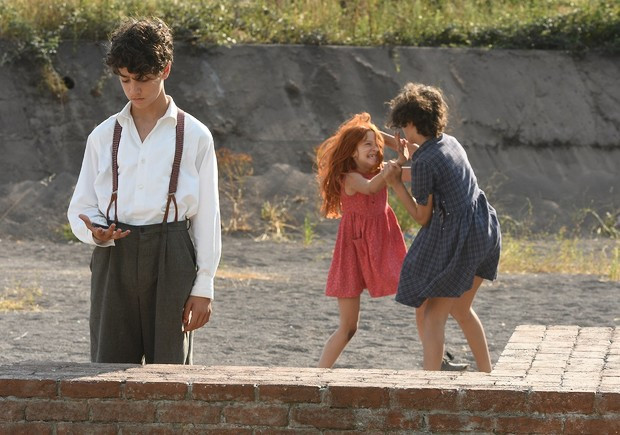
Leonora Addio
Taviani even veers to the comical as Pirandello´s ashes travel through post-war Italy and cause commotion. Before the dead man´s odyssey wraps, the director jumps from Pirandello´s plotline to a completely new one without any further explanation – a color adaptation of the master´s 1900s Brooklyn-set short story “The Nail” revolving around a gruesome incident of small kids. Pirandello wrote “The Nail” twenty days before his death.
Leonora Addio is not just a homage to Luigi Pirandello, it´s obvious homage to Vittorio Taviani and to the neorealism, the Italian cinematic golden age. The bittersweet existentialist road movie of almost ceremonial hauling of Pirandello´s ashes serves as a gesture acknowledging that one´s death does not stop the world spinning no matter what the stature of the deceased had been.
Spartan Idyll of Poverty Realism
The Chinese entry in the main competition, Return to Dust, by the director Li Ruijun threaded a stylistically different path than Vittorio Taviani. While both films share a meditative aspect about life, Ruijun’s sixth feature film pushes austerity and ascetism of social dramas ad extremis.
Ruijun wrote the (love)story of two single outcasts, a hardworking farmer Ma and health compromised limping woman Guiying. The forced matchmaking and arranged marriage are fixed to remove the burden of taking care of both by their relatives and leaving them to their own devices, although Ma is being exploited by his relatives. Two complete strangers start living in a non-communicative union in a sheer poverty.
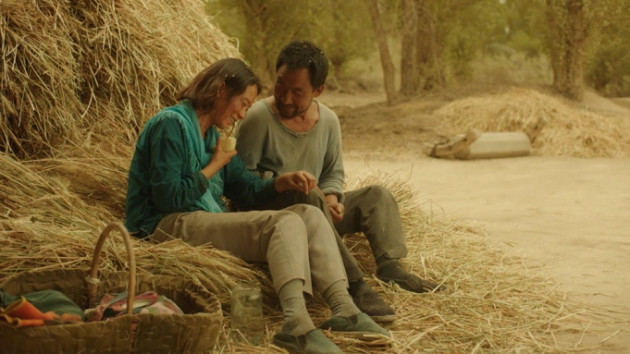
The budding relationship unfolds against every romance cliché of star-crossed lovers whose days are filled with unending labor. The director observes the rising sparks of affection that transcends the limits of inevitable pragmatism. The tiny rays of happiness start glowing through the daily fog of otherwise miserable existence which both characters endure stoically.
Ruijun packs Return to Dust with all around ambiguity. On one hand it is an elegy about minority being pushed to the fringes and not offered any meaningful institutional saving net. On the other hand, it is a paean to human spirit and tenacity in the face of ill-fated odds, with a hidden potential for political subtext (although the director mostly outmaneuvers the narrative onto an apolitical territory).
The gravitational pull of both social misfits should be a melodrama by nature, however Ruijun’s framing this as a social drama desentimentalizes the rural romance. In the same sense, the film marries a fragility and adamant resolve which comes full circle after the heartbreaking twist in the finale.
Programming Uninterrupted
The new programming team is gelling and settling pretty well in Berlin after being transplanted from Locarno. And Carlo Chatrian is delivering on the promise of thought-provoking cinema that he successfully practiced as the head of the Swiss leading film gathering. The programming continues to develop the Berlinale thread of political movies with Locarno´s flair for boundary-pushing, form-twisting, and genre-bending audiovisual efforts.
The German festival brought back U.S. preeminent avant-garde filmmaker James Benning whose non-figurative trip across the country The United States of America (2022) is an elaborate conceptual joke. While not packing the irony of his previous work, Maggie´s Farm, that bowed in pre-Covid Berlin, non-figurative shots featuring mostly landscape and very little architecture present the essence of natural Americana. The higher-paced rhythm of The United States of America of a still-life representing each state of the U.S. makes the venture more digestible as the screening recorded zero walk-outs, unlike Maggie´s Farm.
Among the transplants from the Swiss festival to the German film gathering have been the rising American talent, Tyler Taormina. Taormina premiered his feature debut, a psychedelic coming-of-age Ham on Rye in Locarno, and his follow-up Happer´s Comet has been welcomed in Berlin. The sophomore feature certainly bears a stamp of COVID or lockdown film, a lo-fi low-budget non-verbal effort as a nocturnal urban symphony. The director captures mundane midnight activity that turns into acts of sonic transgressions as suburbians fail to catch any shut-eye and disrupt the dead of night.
Chatrian´s team connected well with the legacy established under the leadership of Dieter Kosslick while carving out a more world cinema progressivist direction. And the pandemic did not disrupt that.



